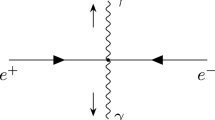Abstract:
In a general-relativistic spacetime (Lorentzian manifold), gravitational lensing can be characterized by a lens map, in analogy to the lens map of the quasi-Newtonian approximation formalism. The lens map is defined on the celestial sphere of the observer (or on part of it) and it takes values in a two-dimensional manifold representing a two-parameter family of worldlines. In this article we use methods from differential topology to characterize global properties of the lens map. Among other things, we use the mapping degree (also known as Brouwer degree) of the lens map as a tool for characterizing the number of images in gravitational lensing situations. Finally, we illustrate the general results with gravitational lensing (a) by a static string, (b) by a spherically symmetric body, (c) in asymptotically simple and empty spacetimes, and (d) in weakly perturbed Robertson–Walker spacetimes.
Similar content being viewed by others
Author information
Authors and Affiliations
Additional information
Received: 16 October 2000 / Accepted: 18 January 2001
Rights and permissions
About this article
Cite this article
Perlick, V. Global Properties of Gravitational Lens Maps¶in a Lorentzian Manifold Setting. Commun. Math. Phys. 220, 403–428 (2001). https://doi.org/10.1007/s002200100450
Issue Date:
DOI: https://doi.org/10.1007/s002200100450




